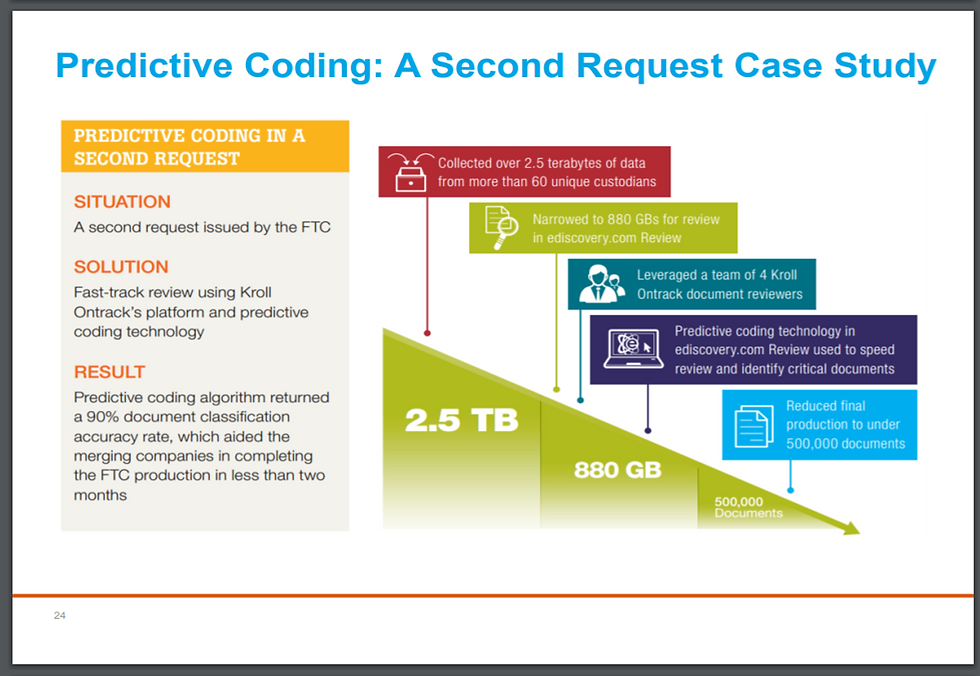TAR and Second Requests
- Sean O'Shea
- Oct 18, 2017
- 2 min read
One of the first tips posted to this site, back on April 29, 2015, was that a 'HSR Second Request' under the Hart–Scott–Rodino Antitrust Improvements Act provides a good opportunity to convince a party to use technology assisted review. The Second Request is a,"Request for Additional Information and Documentary Materials" made by the FTC when it believes that a merger may interfere with competition in a particular market.
Kroll and an attorney at Wachtell Lipton LLP collaborated on a December 2016 presentation on Second Requests, entitled, "The Nuts and Bolts of Second Request Compliance", which is available on the site of the New York State Bar Association. It details the way in which technology assist review can expedite the production of a large number of documents which must take place before a waiting period of 10-30 days will begin before a transaction will be permitted to close.
Second Requests may on average delay the completion of mergers by as long as three months. Substantial compliance is required before the second waiting period can begin and is usually 'extremely burdensome' and can cost 'several million dollars'.
The DOJ and FTC have set guidelines for the discovery process allowing for between 30-35 custodians; recommending 4-6 months of pretrial discovery if the parties end up litigating; and specifying that the discovery should cover a time range of two years prior to and up to 30-45 days before the request. The FTC may require a full privilege log for 5 custodians prior to compliance being acknowledged.
The DOJ's Second Request Model requires that parties provide a written description of search terms or a predictive coding method. It states that:
" For any process that instead relies on predictive coding to identify or eliminate documents, you must include (a)confirmation that subject-matter experts will be reviewing the seed set and training rounds; (b) recall, precision, and confidence-level statistics (or an equivalent); and (c) a validation process that allows for Department review of statistically-significant samples of documents."
The presentation encourages the parties to collect documents before a Second Request is made. Notably it quotes a publication of the DOJ on TAR that specifically endorses its use for Second Requests, "Predictive coding is preferred because the judgments about responsiveness during manual review are less accurate and almost certainly are not consistent among reviewers." See “Technology Assisted Review and other Discovery Initiatives at the Antitrust Division”.






